Scott Hamilton – 25 September, 2019
Waitakere Library is home to at least one astonishing hoard of unpublished material. The JT Diamond West Auckland Heritage Collection includes ten thousand photographs and an indeterminate amount of text; it was assembled in six decades by Jack Diamond, a carpet salesman who became expert in archaeology, oral history, geology, aqua-technology, and urban design.
EyeContact Essay #33
Auckland’s fifty-five public libraries are scattered across the city like islands. Waitakere Library in Henderson is a remote part of the archipelago, an outlier of the much larger library in Auckland’s central city. Where the central library has a massive stash of unpublished manuscripts and images, Waitakere has a more modest research archive.
Yet Waitakere Library is home to at least one astonishing hoard of unpublished material. The JT Diamond West Auckland Heritage Collection includes ten thousand photographs and an indeterminate amount of text; it was assembled in six decades by Jack Diamond, a carpet salesman who became expert in archaeology, oral history, geology, aqua-technology, and urban design.
Diamond recorded the ruins of kauri dams and pa in secluded bush valleys, as well as the shopping malls and carparks of the new suburbs of postwar Auckland. His camera looked down overgrown logging tracks and developers’ bleak cul-de-sacs. He shot house fires and crashed cars, as well as ancient ships inundated by black dunes.
A photo taken sometime in the 1930s shows Diamond and his young wife Melville on a motorbike in a suburban driveway. A kitbag nestles in Jack’s lap like a pup. The couple are about to ride off towards the Waitakere Ranges.
In the ‘30s and ‘40s hundreds of young men and women fled Auckland on weekends and public holidays for the bush and hills and beaches of the west. They tramped, stripped and swam in rivers and surf, and filled notebooks with poetry and with sketches of unidentified insects and flowers. The Auckland Tramping Club established huts in the ranges; its members and associates included intellectuals like Allen Curnow, Elsie Locke, and RAK Mason.
For Aucklanders coming of age during the Great Depression, international travel often seemed impossible; the world’s continents were as exotic and as distant as planets. The Waitakeres, though, were both exotic and accessible. When Robin Hyde fled Avondale Mental Hospital in 1937, she planned to take a boat to tropical Polynesia. But the fares were far too high, so Hyde headed for a boarding house at Waitarua, near the top of the Waitakeres.
For Jack Diamond, the human history of the Waitakeres was as compelling as the region’s geology and flora and waters. The ranges had always been a place of refuge and rebellion. In the 1820s its tangata whenua, Te Kawerau a Maki, hid from Hongi Hika’s invading muskets in gorges and caves; in the 1860s deserters from an imperial army on its way to the Waikato found succour in the forest; in the 1890s criminals were sometimes offered a choice between a term in Mount Eden Prison or a train ticket to Henderson, where a gumdiggers’ camp offered employment and an alternative, anarchic society.
On his early journeys through the ranges Diamond became fascinated by the old men and women he met in bush camps and ghost villages. He began to carry a notebook, a camera. Sometime in the early ‘50s Diamond memorised the directions he had gotten from an elderly bushman, parked his motorbike by Piha Road, crashed through rata vines and parataniwha and into the Anawhata gorge, and discovered a remnant of a lost civilisation. The dam had burst decades ago, sending a load of kauri logs down to the sea. With its missing planks and skewed poles, it was cryptic as the broken phrases of a papyrus manuscript attacked by beetles. Diamond’s photographs became a sketch, a set of sketches, a monograph.
Later, with the help of a young university graduate named Bruce Hayward, Diamond published a two volume catalogue of Waitakere ruins. With an attentiveness and tenderness that were almost erotic, Diamond and Hayward described pa terraces and razed mills, karaka plantations and flooded gunpits.
Diamond had many research interests, but he seems to have become particularly preoccupied with the Orpheus, the British troopship that foundered on a taniwha-shaped sand shoal at the mouth of the Manukau in 1863, a few months before the invasion of the Waikato. Hundreds of the ship’s press-ganged passengers were washed ashore at Huia and other bays on the Manukau’s northern shore; a few of them were still breathing. In 1863 the Kilgour family was farming a few acres of burnt bush behind Huia; they were Scots, and no friends of the British Empire, and happily hid sodden survivors of the Orpheus from search parties. The Orpheus deserters took new names, grew or shaved beards, invented narratives of civilian journeys to the antipodes.
When Jack Diamond was a young man a few elderly deserters still lived by the shores of the Manukau. Journalists sometimes sought these ghosts out. In 1929 The Press introduced Charles Sturridge, who had boarded the Orpheus as a boy, piloted a spar away from its wreck, and landed at Muddy Creek, where he hid from the military in a timber mill. The Press issued a pompous pardon to the old deserter, declaring that he had ‘contributed his quota to the pioneering work of New Zealand’.
It is unclear whether Jack Diamond met any of the ghosts of the Orpheus. For decades, though, he sought out other relics of the ship. Just as the light from a dead star can reach distant worlds, so objects from the wreck of 1863—booms, boards, soldiers’ buttons, bones—keep landing on Auckland’s beaches. In 1967 Diamond photographed Bill Barr with two heavy bolts that had washed up at Whatipu. Barr looks away from the camera; his hands sag as they try to hold onto the bolts. He has the face of a condemned man, thrown into the sea with weights attached. Does Barr remember that the Orpheus is supposed to be a cursed ship, that bad luck is supposed to befall anyone who chances on its remains?
In the decades after World War Two Diamond gave as much attention to the new suburbs of West Auckland as he did to the hills and bush and sea beyond the city. His shots of the malls, housing developments, and cul-de-sacs of New Lynn and Henderson sometimes resemble stills from French New Wave movies. Blurred figures hunch in cars thwarted by dead end roads, gaze at billboards promising new housing estates.
An elderly West Aucklander who was acquainted with Diamond told me that his labours sometimes bemused locals. As he stooped to photograph a new picket fence or a slightly dented power pole or the stump of a pioneer’s macrocarpa, Diamond appeared pedantic, perhaps obsessive. And yet, precisely because it is so democratic, so accepting of the minor, even the mediocre, Diamond’s oeuvre now appears fantastical. His images teem with details that have disappeared from the world, and from most memories. Diamond shows us the strange ritual that was the 1963 Industrial Fair, during which sea scouts in white uniforms and white hats marched along Great North Road to celebrate the role of New Lynn’s potteries in human progress. Diamond records the openings of west Auckland’s first supermarkets, showing formally clothed shoppers queuing with the shy excitement of pilgrims approaching a sacred spring.
Sometimes Diamond’s style defies his subject matter, so that he becomes less an observer than an artful obscurer. In the 1950s he moved to Glen Eden, and began to take shots of the suburb with titles like 3 Guys Supermarket. But Diamond often left his ostensible subjects on the margins of his frame, and gave most of his attention to Glen Eden’s weather. In 3 Guys Supermarket sprawling cumulus clouds belittle the squat structures of humans. And yet the clouds are not dark, not windy, not ominous: they seem marvellous and harmless, like dreams.
Sometimes Diamond gives his photos angles and exposures that seem to mock their quotidian subject matter. When I saw a photo of rail cars rushing ahead like a dark blurry river I thrilled with acceleration, and squinted into the distance, expecting to see Siberian snow, or deserts of cacti, or Iowa’s nineteen million pillars of corn. Then I remembered that Jack Diamond’s world was West Auckland, and that the train in the photograph was bound for Ranui.
For decades Diamond recorded the anabolic growth of Auckland’s motorways with the cool but not unsympathetic eye of a radiographer. In a shot taken along a new stretch of the northwestern motorway in the 1970s, pylons seem to rise like huge mutant theodolites from doomed paddocks. Did Diamond remember the ruins of the Waitakeres, the pathos of broken kauri dams and stormed pa, when he shot the monuments of modern Auckland?
The global warming crisis has lately prompted calls for curbs on international travel. The days of cheap air fares and global adventures may draw to an end. Perhaps the next generation of Aucklanders will suffer the same claustrophobia as their 1930s forebears. If they are deprived of the rest of the globe, then Aucklanders could do worse than explore the world that Jack Diamond discovered in their western hills and suburbs.
Scott Hamilton
Recent Comments
Darian Zam
A fascinating and well-written article Scott. I have some appreciation of how difficult it is to sum up such an ...
Bruce Hayward
I knew Jack quite well from 1974 until his death and I am afraid there is a great deal of ...
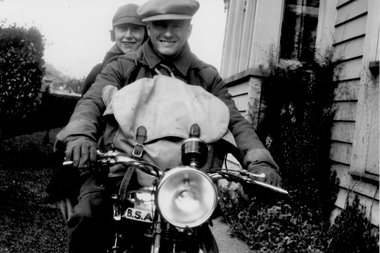
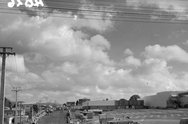
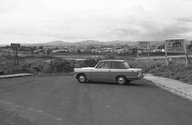


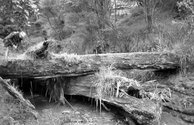

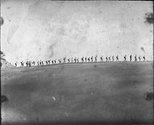
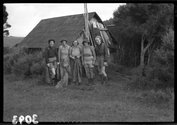
 Two Rooms presents a program of residencies and projects
Two Rooms presents a program of residencies and projects Advertising in this column
Advertising in this column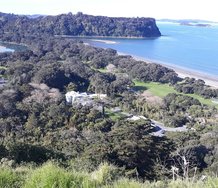
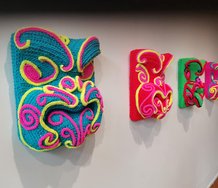

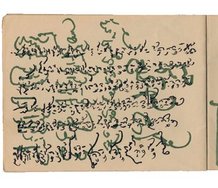
This Discussion has 2 comments.
Comment
Bruce Hayward, 2:25 p.m. 21 December, 2019 #
I knew Jack quite well from 1974 until his death and I am afraid there is a great deal of imagination gone into this lovely piece about his hobby. Jack was never an expert on geology for example - yes he followed me up and down the streams of the Waitaks but mostly at that stage we were chasing the relics of human activities and he never showed a great interest in nor understanding of the rocks.
He also reminisced a lot about his earlier days in the Waitakeres and his oral history interviews with some of the older identities from the west. He took many photographs but always he was recording the remains of history or a snap shot of the suburbs to compare with some future date and not imagining the meaning of the clouds nor thinking about what others might later read into his images.
He always insisted that he had three main areas of interest in the history of west Auckland and he became an expert in his own right in each of them. First the history of the Kauri timber industry in the Waitakeres, second the pre-European archaeology and Maori history of the Waitakeres and thirdly the history of the brick and ceramics industry in west Auckland.
Together we completed his documentation of the archaeological remains of the kauri timber industry and pre-European Maori occupation and published synthesis documents on these two areas to his satisfaction in the late 1970s. He focussed the last two decades of his life working on the brick and ceramics industry records and in getting all his historical notes and photographs in order so that now they are such a useful resource for anyone interested in the history of west Auckland.
I was the one who led the documentation of the historic archaeological sites in the Waitakeres (as indicated by my first authorship of the ARA Parks Report), he provided a lot of help but was not so committed to that project.
Jack often did express one particular feeling for the changing face of HIS Waitakeres but this is not captured in this piece. This was his dismay at the rapid regrowth of the forest of the Waitakeres that was rapidly obscuring the wonderful views from the ridge crest that he so enjoyed in his tramping days in the 1930s.
Darian Zam, 7:45 p.m. 5 March, 2020 #
A fascinating and well-written article Scott. I have some appreciation of how difficult it is to sum up such an extensive collection of work. A most enjoyable read.
Participate
Register to Participate.
Sign in
Sign in to an existing account.